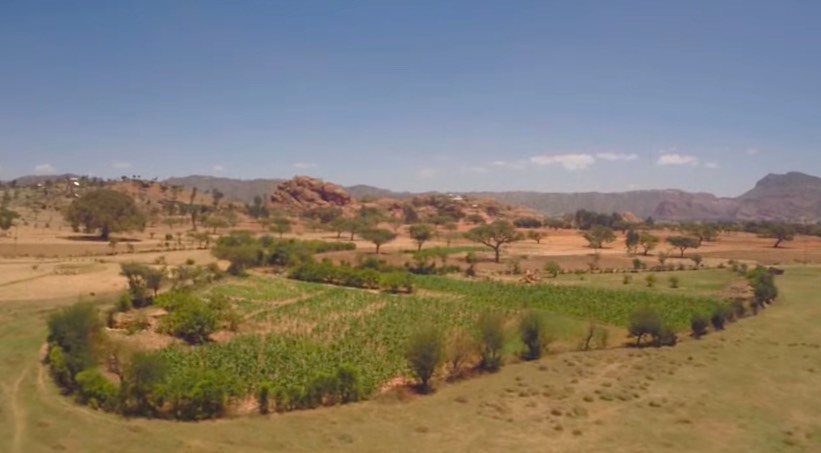The Ethiopian desert, full of drought and famine just a generation ago, is turning green with crops. Thousands of villagers are taking up ancient tools to transform the desert into a terraced landscape that acts like a giant irrigation engine to drive the growth of thriving vegetable farms.
The terraces trap the desert’s rare rainfall, forcing it to soak into the ground slowly instead of running off the land carrying away topsoil in flash floods. Portions of Ethiopia’s Tigray province have also banned free range grazing livestock which used to devour plants needed to kept soil in place. Eucalyptus and acacia trees have made a comeback, their strong roots reinforcing the soil.
Even the deep ravines cut by past flash floods have been repurposed to put water back into the sandy soil. Villagers have built dams along the length of the ravines, forcing water to flow more slowly and collect in large pools.
“We’ve built 85 of these check-dams so far,” Aba Hawi, community leader in one of the province’s villages, told the BBC. “These mini-reservoirs fill up during the rains and are fed by groundwater in times of drought. Now, every farmer has a well.”
And they don’t have to dig those wells nearly as deep to reach water. A decade ago, a farmer would have had to dig 50 feet down to hit water, but today it’s only about 10 feet.
A forthcoming film, Tigray Rising, documents the amount of progress in converting wasteland to farmland. The World Resources Institute estimates more than 600,000 acres of desert have been reclaimed in Ethiopia’s Tigray province, with farms turning out three crops each year of potatoes, corn and other produce. The country has a goal of reclaiming more than 37 million acres by 2030.
(WATCH the documentary trailer below or READ the full story at BBC)




















